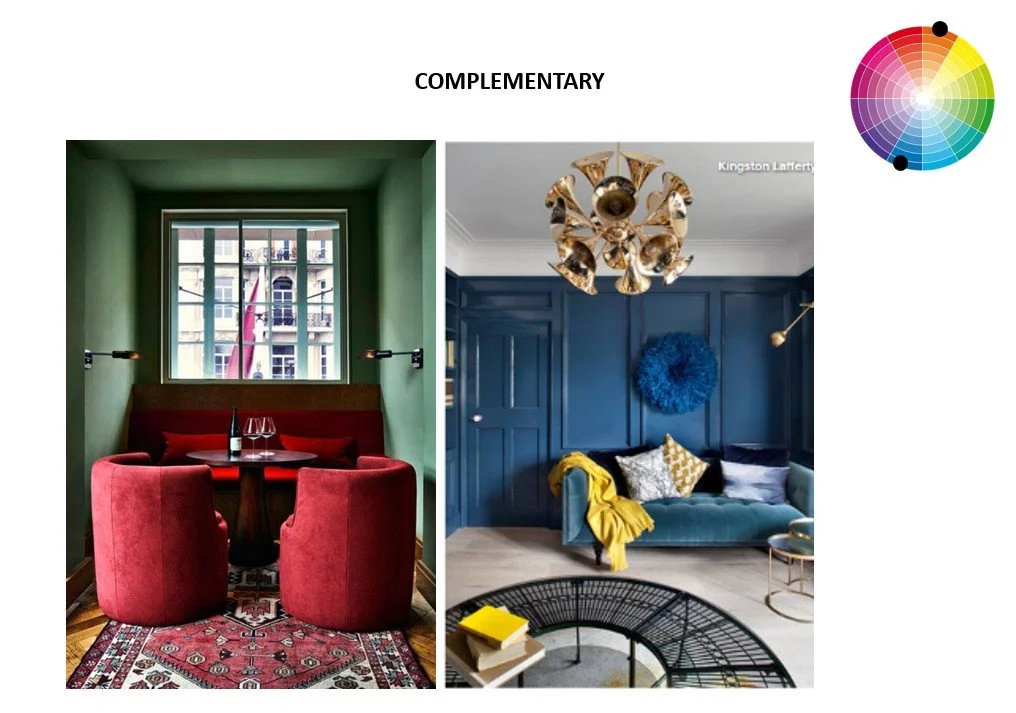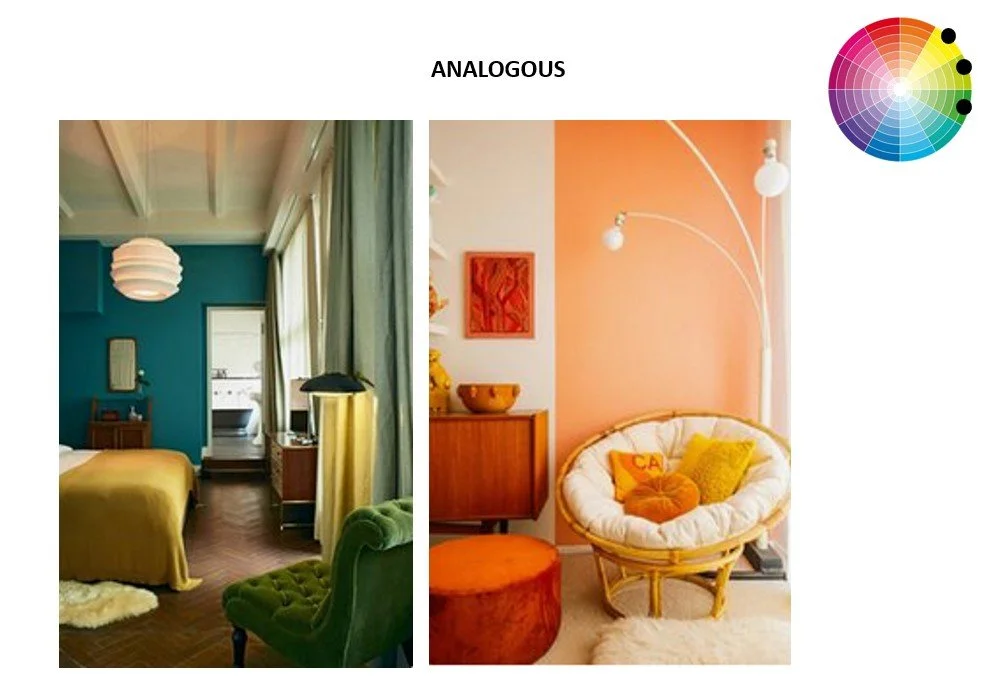What Is Colour Theory in Interior Design?
Colour theory is the art and science of using colour intentionally. It helps us understand how colours relate to one another, how they interact with light, and how they affect our emotions. Rooted in the colour wheel created by Sir Isaac Newton, it provides a framework for creating balance and beauty.
As a luxury interior designer in Cambridge, I use colour theory to create sophisticated palettes that bring personality and purpose to every room.
Understanding the Colour Wheel
Primary colours: Red, blue, and yellow — pure and unmixed.
Secondary colours: Green, orange, and purple — formed by blending primaries.
Tertiary colours: Hybrids like teal and burgundy — created by mixing a primary with a neighbouring secondary.
These combinations set the foundation for expressive, emotionally intelligent design.
Creating Colour Harmony: Three Tried-and-True Approaches
Complementary colours (opposites on the wheel): Think navy and burnt orange. High contrast, high drama.
Analogous colours (neighbours on the wheel): Like olive, forest green, and teal — calming and cohesive.
Monochromatic palettes: Shades and tones of one hue. Clean, minimal, and often quietly luxurious.
I use these principles daily in my Cambridge design practice, especially when rebalancing awkward spaces or introducing flow to open-plan homes.
The Psychology of Colour in Your Home
Colour isn't neutral—it evokes. And that emotional response is where the magic of interior design begins.
Warm tones (think terracotta, mustard, blush) energise and uplift.
Cool tones (like sage, stone, dusty blue) offer calm and clarity.
Deep, rich hues (such as charcoal or forest green) add intimacy and depth—perfect for dramatic dining rooms or moody bedrooms.
As an Interior designer in Cambridge, I consider these emotional effects just as carefully as lighting, materials, and furniture layout.
Why Colour Theory Matters in Cambridge Interiors
Cambridge homes are wonderfully diverse—Georgian terraces in the city centre, new-builds in Trumpington, and converted barns scattered across the Cambridgeshire countryside. And each type of space brings its own colour challenges.
Here's how I use colour theory to bring out the best in local architecture:
Enhancing soft northern light in traditional homes with warm undertones
Creating depth and richness in minimalist new builds with layered neutrals
Highlighting period details without overwhelming them
Reflecting each client’s identity through personalised palettes
This is where a luxury interior designer in Cambridge brings real value—blending creative instinct with technical precision and deep local insight.
My Process: A Collaborative Approach to Colour
No two Cambridge projects are ever the same. That’s why I always begin with a conversation. What colours do you gravitate towards? How do you want to feel when you walk into the room?
From there, we co-create a palette that:
Complements your home’s architecture
Enhances the natural light
Speaks to your personal style
Supports your lifestyle and routines
This tailored, intuitive approach is what sets Pinterior Space apart as a contemporary interior design studio in Cambridge.
Let Colour Tell Your Story
In the end, colour is more than just visual—it’s visceral. It shapes how we experience our homes, and by extension, our lives.
If you’re ready to explore the full potential of colour in your home, I’d love to help. Whether you want to warm up a living space, calm a bedroom, or inject life into your home’s heart—we’ll use colour theory to create something beautiful, timeless, and unmistakably you.




